QuestionQUESTION: Hello Thea!
I have a 5yr old Aussie White's who has recently had a sequence of issues with her hind legs - since I needed to include more than one image, I have uploaded them to PhotoBucket and put the IMG & direct links below (I hope they show up properly). It started out initially as a couple of sores on her rear end (1st image), which I thought she might have just gotten from chaffing, as she likes to spend her time on a large piece of driftwood I have in the cage (reptarium), but then a couple of days later it had blown up into some serious swelling on her right leg & abdomen (2nd image) and I immediately quarantined her. At this point I tried Googling the issue and came up empty - you were not available at the time, so I asked BPC, but this was not his area of expertise. For the first few days after the 2nd photo, I treated her with 1mg of oral tetracycline solution (25:1 ratio) for a week, combined with a daily topical application of Neosporin, and Melafix in her water overnight (about 1/2 inch of water). I stopped the tetracycline after the first week, as I read that it can cause problems with the liver. While the swelling subsided within a few days, there has been fairly consistent discoloration on the backs of her rear legs ever since (3rd image) - the small "lumps" on each leg just appeared in the last day. I have tried to locate some sulfamethiazine locally, but have been unable to do so. I am concerned that, even with the daily application of Neosporin & Melafix, the discoloration & rawness of her legs does not seem to be getting better, at least not over the past week. After considerable research, I'm not certain it's Red Leg (which I thought it was at first), but it would seem to be some sort of bacterial infection. Are there any other or additional treatments I should consider? (Also, none of the local vets are experienced in frogs). While her appetite was still good even when her leg was swollen, it has dropped off since she was quarantined (I expect that to be because of the isolation), but she has been getting a couple of good-sized Dubia roaches a day and has not lost any significant weight. I have been unable to locate any descriptions or pictures similar to her condition. While it may only be a matter of time for her recovery, I am anxious to know if there is anything else I can do to improve her condition.
[IMG]http://i21.photobucket.com/albums/b253/Dragon77/Soresonrearend.jpg[/IMG]
http://i21.photobucket.com/albums/b253/Dragon77/Soresonrearend.jpg
[IMG]http://i21.photobucket.com/albums/b253/Dragon77/Soresonrearend.jpg[/IMG]
http://i21.photobucket.com/albums/b253/Dragon77/Swellingofrightlegandabdomen.jpg
[IMG]http://i21.photobucket.com/albums/b253/Dragon77/CurrentImage.jpg[/IMG]
http://i21.photobucket.com/albums/b253/Dragon77/CurrentImage.jpg
Thank you!
ANSWER: Hi Adam, Thank you for the photos, very helpful. I would say that her symptoms do sound indicative of a bacterial infection. The location, erosive lesions, localized edema and hyperemic appearance of her skin are all fairly consistent symptoms. The term "Red Leg" is a real catch-all phrase that can also encompass viral and fungal infections or these as secondary infections to a bacterial problem . Without any specific diagnostics let's assume you are dealing with a straight ahead bacterial situation for the sake of simplicity
You have done well to keep her going so far, these infections can progress quickly to fatal septicemia. Bacterial infections thrive in moist, warm conditions. I would recommend that you keep her isolation tank quite dry with something like paper towel as a substrate and disposable, or sterilizable climbing surfaces for now. I generally advocate keeping White's quite dry anyway, as long as there is access to clean dechlorinated and dechloramined water. Their thicker skin resists evaporation and lower humidity will reduce the potential for these types of infections. I rarely spray my White's or do anything to increase their humidity beyond ambient.
I think it may be time to move onto systemic antibiotic therapy rather then topical. You mentioned that you do not have a frog familiar vet but there are numerous exotic consultation services that vets can access, sometimes for free or a small fee. They can phone consult with an experienced exotic vet for diagnostic, dosage and drug administration info. I find that younger vets are sometimes more likely to be helpful in this way. There is a link here regarding phone consultation but your vet should have access to a similar resource. http://www.anapsid.org/vets/vetcons.html
Dr.Kevin Wright would be the gold standard, he specializes in amphibian medicine and wrote the amphibian chapter in Dr. Douglas Mader's veterinary text on Reptile Medicine.
Any vet, exotic or not, should be able to take a culture of the lesions for more specific identification of the bacterium. Aeromonas is one of the most common pathogens associated with this type of infection and there are several species. They show various levels of susceptibility to tetracyclines and resistance can be high (a growing concern in aquaculture). You may also be dealing with Pseudomonas which the tetracycline would not affect. One of the drugs of choice for Pseudomonal infections in humans and increasingly being used with amphibians is the 3rd generation cephalosporin Ceftazidime. It is less nephrotoxic then the aminoglycosides, has a broad spectrum and is also highly affective against Aeromonas. It is dosed at 20 mg/kg IM q24-72hrs for amphibians. This would obviously require a willing vet. As a topical for the skin lesions I would try to find 1% Silver Sulfadiazine which is applied once daily. Any vet should have this, it is a standard topical and used in human burn patients who are also very prone to Pseudomonal infections.
There is some speculation that low vitamin A levels can contribute to predisposing frogs to these opportunistic infections. Hypovitamin A is known to inhibit the normal mucous production in the cutaneous layer which lowers their resistance to invasion. Gut-loading feeder insects with carrots and dark greens which contain beta carotenes (the precursor to active vitamin A) is always recommended but it is not known how well amphibians convert carotenes to the active form of the vitamin so a supplement with pre-formed or active vitamin A is also recommended. Best of luck to you and your girl.
---------- FOLLOW-UP ----------
QUESTION: Thea, THANK YOU for your quite extensive response! I contacted my local vet and he would only so such a consultation for a ridiculous fee :(
I was wondering if Bactroban Cream 2% (Mupirocin Calcium) would do in place of the Thermazene? (I can order 50mg of Thermazine online, but it will take a while to get here, while I have some Bactroban 2% on-hand. I will keep her out of the Melafix tank overnight then - she does seem to have been doing well in the dry heat, though I have been spraying her down occasionally (I often spray the reptarium down). I feed my roaches pond pellets, but I can add in some carrots and greens. In place of the Ceftazidime, should I re-start the oral Tetracycline (just in case it is even slightly effective)? I will keep her slightly moist on her front-end and body, but attempt to keep the affected areas drier. I will also try and obtain some oral/sublingual Vitamin A.
I will keep you apprised of her situation!
AnswerHi Adam, Personally, I would not bother with the Mupirocin. Its spectrum of activity is primarily the gram positive organisms like Staph and Strept that typically infect human skin wounds. Its effectiveness against Pseudomonas, Proteus and other gram negatives usually involved in amphibian infections is only seen with very high concentrations of the drug. You could certainly still be dealing with a tetracycline sensitive Aeromonas so I don't think continuing that will hurt. All drugs are metabolized by the liver so the topic of "liver damage" is often raised at some point. Tetracyclines are not highly toxic though. It had long been my drug of choice for treating stress related lesions on new frog shipments when I worked in the exotic trade and with a pretty good success rate. Tetracycline binds with calcium however so reduce your supplementation with that mineral during treatment.

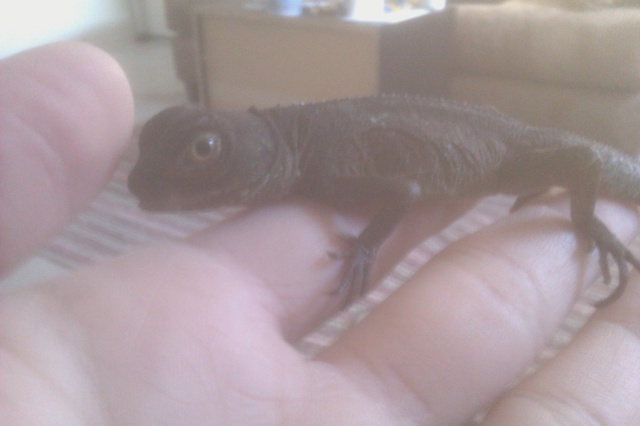 Should I be concerned about my CWD
QuestionQUESTION: Ive had this guy for probably a week
Should I be concerned about my CWD
QuestionQUESTION: Ive had this guy for probably a week
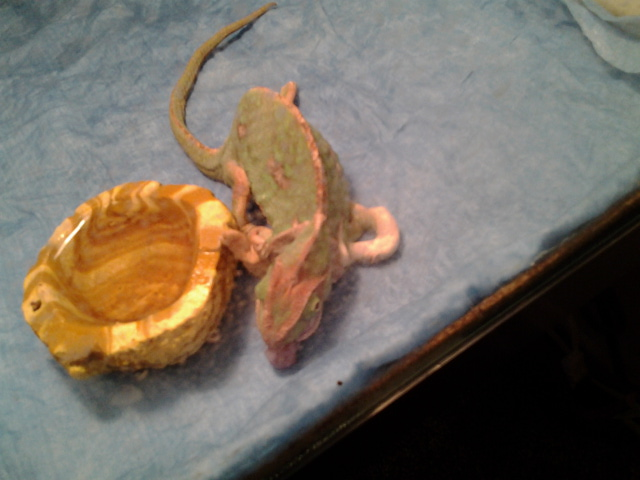 is my veil cham dieing
Question
henri henri 2
Hello, I have a ve
is my veil cham dieing
Question
henri henri 2
Hello, I have a ve
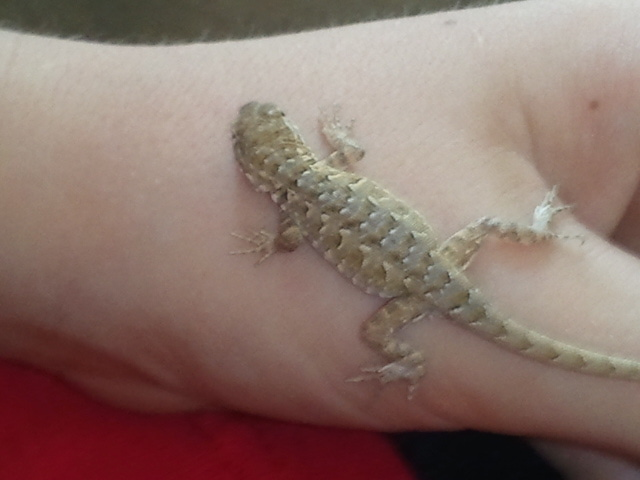 Baby Lizard
Question
Baby Lizard
Hi my son has found two bab
Baby Lizard
Question
Baby Lizard
Hi my son has found two bab
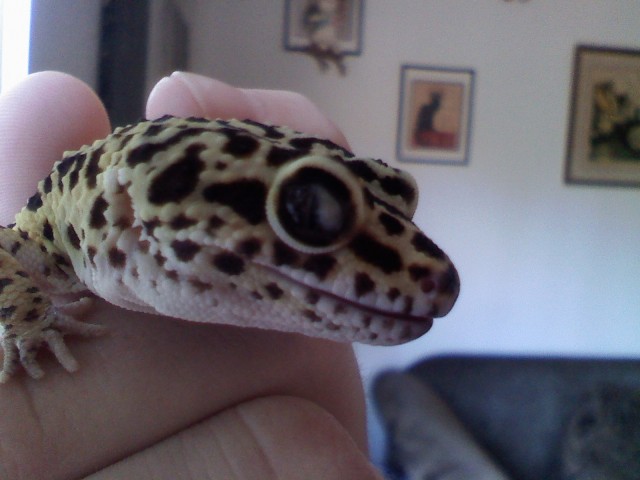 My leopard Gecko Im afraid has skin from shedding stuck in its eye
Question
Yoshis eye
My leopard Gecko Yoshi was fine yes
My leopard Gecko Im afraid has skin from shedding stuck in its eye
Question
Yoshis eye
My leopard Gecko Yoshi was fine yes
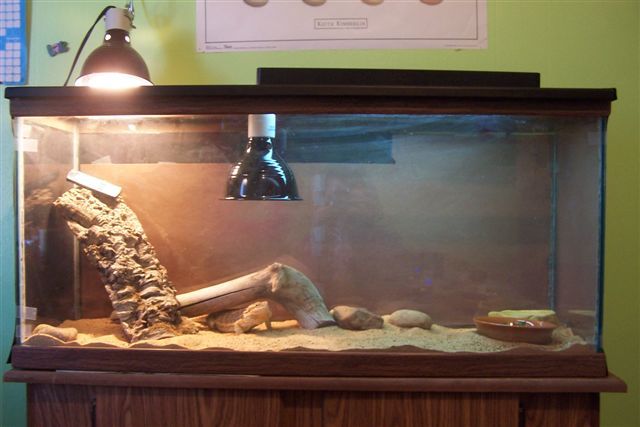 My BD wont eat at all.
QuestionQUESTION: I am desprate!! I purchase a 5-6 mont
My BD wont eat at all.
QuestionQUESTION: I am desprate!! I purchase a 5-6 mont